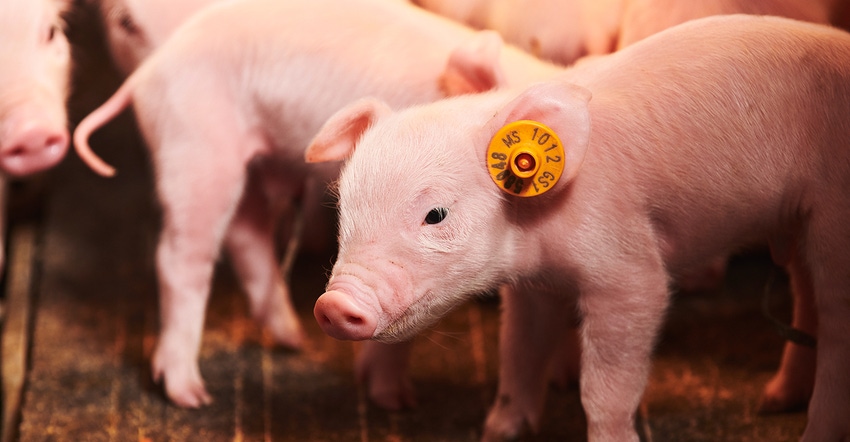How can greater precision lead to less variation and how do you measure the ROI?
March 1, 2021

Sponsored Content
By Dr. Kerry Keffaber, vice president, Product Development & Strategy, United Animal Health
What is your perspective on precision farming and animal agriculture?Where is that going?
When we look at precision agriculture related to animal agriculture, it has a lot of different meanings to different people. Part of being precise is simply trying to understand things that we don’t know. To find trends and insights otherwise unseen without the use of technologies that track and monitor animals and their inputs. For example, traditionally we’ve looked at research as a hypothesis that is proven or disproven in a controlled barn. But with certain technologies, we can correlate findings in your actual production environment.
While the field is broad and people will approach it different ways, the future that will win is where competitive people embrace precision ag technologies to capture competitive advantages. In my view, these advantages probably fall in two main categories – verification and performance.
Verification is all about tracking and recording. If you can’t track it, you can’t measure it or manage it. If you’re not sure what’s happening on the farm, you really don’t know if it’s true. So, this part of verification is really just verifying that what’s happening on the farm is actually what you think is happening. Many times, there is a large, unseen gap.
As we get more and more layers between the person taking care of the pigs and the people making decisions, we’re going to need more precision in verification of what happens. Verification also includes the ability to document and verify transparency. The future of food production will include more verification and transparency, and setting up the right technologies can prepare for that future.
The second bucket is performance. With precision technologies, we’re able to unmask the real truth. We’re able to uncover what type of performance and management is leading to the most positive, optimal outcomes. And then we can replicate it. We can make better decisions to drive those production strategies and protocols. Precision livestock production also opens a whole new world of how we do research, how we get better and how we’re really part of the overall sustainable future of animal agriculture. Digital precision ag tech is going to be a big part of that.
How can greater precision lead to less variation?
You always have to have your eye on the future and not let short-term concerns delay you from being a progressive, precision agriculturalist. Variation among animals and among sites or flows or processes are always a problem. The question is how do we make sure it’s being done the same way every time? How do we make sure that there’re fewer problems with data entry and interpretation? How do we make sure there’s less variation between the individual animals? How do we make sure there’s less variation between this grow out,the next grow out, or the next system? And again, it’s understanding what works the best and then setting up a system to verify,measure, manage, and repeat for the optimal outcomes. That’s what the best systems, such as LeeO, do well. These systems let you see things that are right in front of you but that are often undiscoverable with current practices.
How do you measure the ROI on precision livestock farming?
I think the challenge that we’re always given is how do I make money on these updates in data collection and more sophisticated analysis? How do you get the ROI? A better question is: How can I afford not to progress? I think the companies that are the early adopters will be the ones that will capture the biggest returns from this information. There will be a premium to have it. You can capture value by being the first ones there; the laggers will just be doing it to avoid a discount. The producers willing to be on the cutting edge leading are the ones who will have the biggest returns while the rest just try to catch up because they weren’t able to see the future.
What is LeeO?
LeeO is an RFID smart-tagging system that provides automatic data capture and tracking of the individual animals from birth to finish. The LeeO system is being extensively used in Europe and is now offered in the U.S. to provide greater visibility into individual animal performance. The system reads animal tags with a reader, reducing most manual inputs. With LeeO, you can also reduce entry errors, tag reading mistakes, missing data, double entry, and clipboards becoming smudged with water and manure. While some use LeeO as a sow records program now, their longer-term vision includes tagging every animal to gain production insights, efficiencies, and visibility.
Where does LeeO fit as a sustainability tool?
Like others, I define sustainability as any technology that creates efficiency through the use of resources. LeeO is all about tracking to create more precise, consistent and efficient livestock production. I believe that any producer looking at sustainability in a real way should be looking at current usable available ag tech like LeeO. When using technologies like LeeO RFID tagging, every pig becomes a research project in your system. They say knowledge is power, so knowing everything about every pig in your system might just give you superpowers.
If you enjoyed this article, be sure to catch next month’s article where Dr. Greg Krahn discusses the implementation of LeeO at the production level. Dr. Krahn will also be presenting at the AASV Annual Meeting on the topic of “The Power of Big Data Analytics to Generate Data-Driven Production Decisions.”
About the Author(s)
You May Also Like


.png?width=300&auto=webp&quality=80&disable=upscale)
